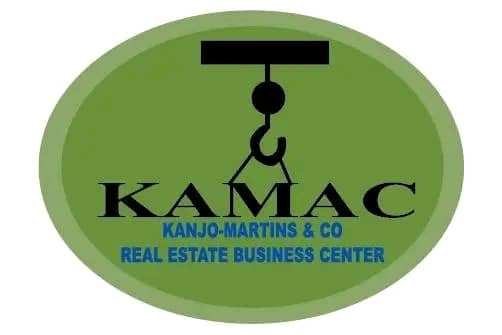Bore Holes
Introduction:
Water well drilling is a vital process in addressing water scarcity and ensuring access to clean water in Cameroon. This article aims to provide a comprehensive guide to the water well drilling process in Cameroon, incorporating highly searched keywords related to drilling in the country. By optimizing the content with these keywords, we can enhance the visibility of this article for Google search results.
Keywords: water well drilling, drilling process, borehole construction, drilling techniques, water well maintenance, Cameroon
1. Site Selection and Survey:
The initial step in water well drilling is site selection and survey. Geologists and hydrologists assess the geological conditions, study water tables, and identify potential water sources. Factors such as proximity to communities, accessibility, and groundwater availability are considered during this stage.
Keywords: water well drilling, site selection, survey, borehole location, hydrogeological assessment
2. Equipment and Drilling Techniques:
Specialized drilling equipment and techniques are employed for borehole construction. Common drilling techniques used in Cameroon include rotary drilling, percussion drilling, and auger drilling. These methods are chosen based on the geological composition of the area. Drilling rigs and associated machinery are used to penetrate the ground and reach the aquifer.
Keywords: drilling equipment, drilling techniques, rotary drilling, percussion drilling, auger drilling
3. Drilling Operations:
During the drilling operations, the selected drilling technique is implemented to create the borehole. The drilling rig is positioned, and drilling begins. As the borehole progresses, drill cuttings are removed, and the hole is continuously flushed with water or drilling mud to maintain stability. The depth of the borehole depends on the target water table and the water demand of the community.
Keywords: drilling operations, borehole construction, drill cuttings, drilling mud, water table
4. Well Casing and Completion:
Once the desired depth is reached, the borehole is lined with well casing to prevent collapse and contamination. The casing is typically made of PVC or steel and is inserted and cemented into the borehole. A screen is also installed to filter out sediment and debris while allowing water to enter the well.
Keywords: well casing, completion, PVC casing, steel casing, well screen
5. Pump Installation and Testing:
After the well casing is installed, a pump system is installed to extract water from the well. The type of pump used depends on the depth, water yield, and power availability. Once the pump is installed, various tests are conducted to measure the well’s yield, water quality, and overall performance. These tests ensure the well is functioning optimally and can meet the community’s water needs.
Keywords: pump installation, well testing, water yield, water quality, well performance
6. Well Maintenance and Monitoring:
Regular maintenance and monitoring are crucial for the longevity and efficiency of water wells. Communities should establish maintenance schedules, inspect the pump system, and address any issues promptly. Water quality testing should also be conducted periodically to ensure the water remains safe for consumption.
Keywords: well maintenance, well monitoring, pump system maintenance, water quality testing
Conclusion:
The water well drilling process in Cameroon involves several critical steps, including site selection, drilling operations, well casing, pump installation, and maintenance. By understanding this comprehensive process, communities and stakeholders can actively engage in water well drilling projects, ensuring sustainable access to clean water. Regular maintenance and monitoring are essential to maximize the longevity and efficiency of water wells, benefiting the communities they serve.
Drilling water wells
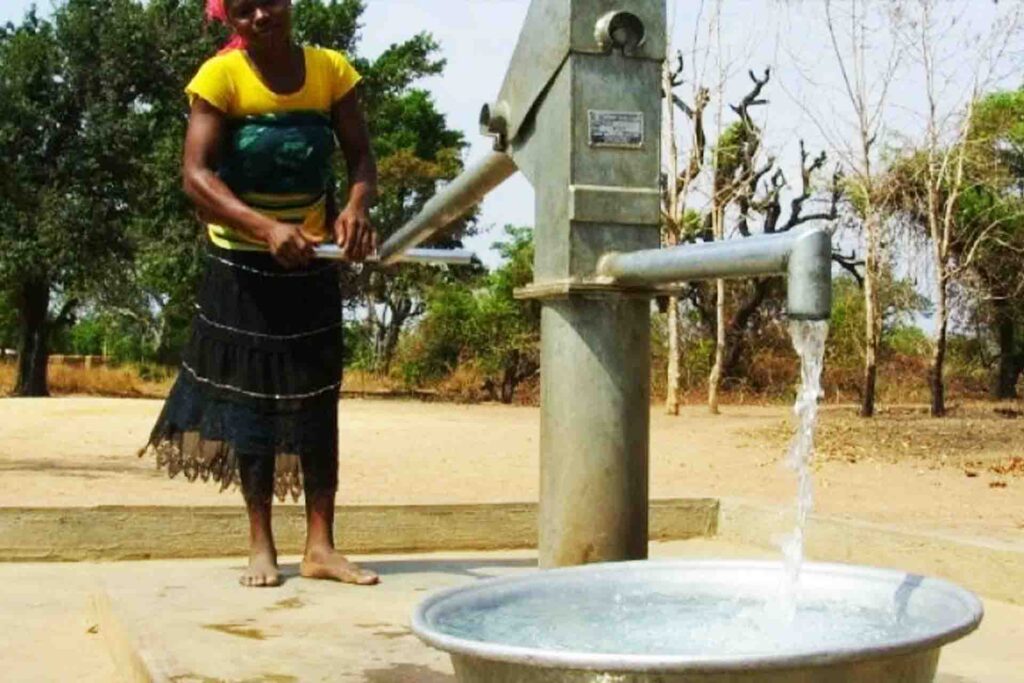
Hydrogeological drilling study
Our mission is to provide accurate and detailed hydrogeological studies to ensure the success of water drilling projects. We have extensive experience in this field and use the latest technology to carry out our studies.
An in-depth analysis of the site
Our study process begins with a detailed site analysis. We collect geological and hydrogeological data using advanced techniques such as seismic, geophysics, radar, and mapping. We also use modeling tools to simulate the site’s hydrogeological conditions and estimate drilling capacity.
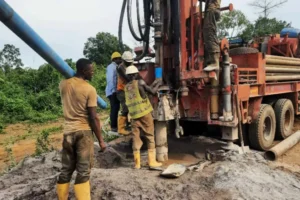
Collection of geological and hydrogeological data
Once we have collected all the necessary data, we conduct a thorough analysis to determine the depth of the water table, water quality, soil permeability, and other key factors. We also consider the drinking water needs of the population or industry to be served to determine the borehole capacity.
Production of a detailed report
Our team of experienced professionals then uses all the information gathered to develop a comprehensive and detailed report. This report includes a detailed site description, an analysis of the collected data, modeling of hydrogeological conditions, an estimate of the drilling capacity, and recommendations for the project’s success.
Guarantee the success of your project
We take pride in our work and are committed to providing superior hydrogeological studies to ensure the success of your water drilling project. Contact us today to learn more about our services and to discuss your project with our team of experts.
Modern well constructions
Our expertise
Our company, which specializes in water drilling systems, ensures efficient and safe installation of your system. We install steel or PVC tubing to protect the water from contamination and a pump tailored to your needs to bring the water to the surface. Safety equipment is also installed to ensure worker safety.
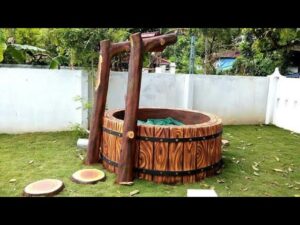
Our vision
We place great importance on the filtration system to reduce contaminant levels and ensure a quality drinking water supply. We also provide regular maintenance to ensure the reliability of your water well system. Connections are made according to standards for reliable and efficient drinking water distribution. We are committed to complying with environmental standards to protect natural resources, the environment, and human health.
Construction of water supply networks
Preliminary study of the project
Analysis of the water needs of the population or industry to be served
Assessment of drinking water source and geological conditions of the terrain
Determination of the network route based on obstacles and environmental constraints
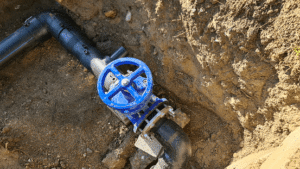
Construction of pipelines
Installation of pipes to transport water from the source to consumption points
Choice of materials based on water quality, required pressure and durability
Laying of pipes in compliance with current standards and regulations
Water regulation and treatment equipment
Installation of valves, meters, booster pumps and tanks to regulate water pressure and flow
Installation of a water treatment system to remove impurities and
Contaminants
Regular monitoring of water quality and maintenance of equipment
Network commissioning and monitoring
Verification of network compliance with current standards and regulations
Commissioning of the network and connection of consumption points
Regular monitoring of the network to detect leaks, breakdowns and malfunctions, and carry out necessary repairs
Hydrogeological study of the soil
Our drilling company carries out hydrogeological studies to assess the availability of water resources in a given region according to the following procedure:
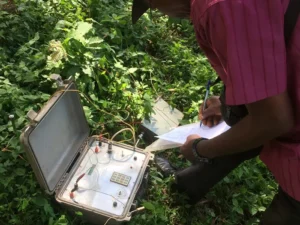
Collection of environmental and geological data
We collect basic data about the drilling area, such as topographic maps, geological maps, climate data and hydrological data.
Assessment of soil and rock properties
We also evaluate soil and rock characteristics, such as porosity, permeability and hydraulic conductivity, using drilling and field analysis techniques.
Recommendations for optimized drilling
From these data, we use modeling software to simulate groundwater flows and predict the spatial and temporal distribution of water resources.
Assessment of potential risks
Finally, we make recommendations for drilling, evaluating the results of the hydrogeological study to determine the optimal drilling depth and proposing solutions to ensure the quality and quantity of groundwater. We also assess potential drilling risks, such as environmental impact, public health risks, and economic risks, to ensure the safety and sustainability of our drilling projects.
Complete drilling + installation of a pump
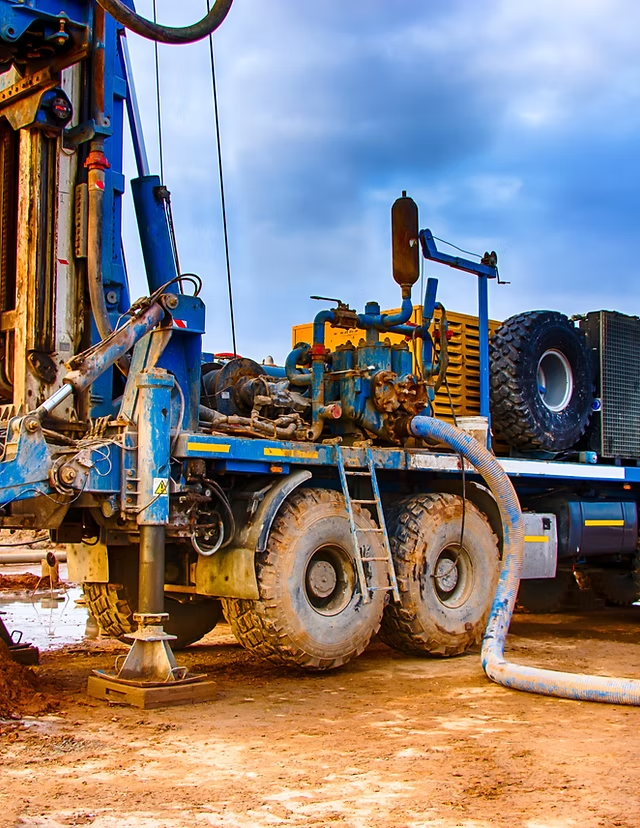
Our company offers complete drilling and pump installation services to meet the drinking water needs of individuals and businesses at all stages.
In-depth hydrogeological studies
We carry out hydrogeological studies to assess the availability of water resources in the drilling area and determine the optimal depth for drilling.
Advanced drilling techniques
We use advanced drilling techniques and state-of-the-art equipment to ensure the quality and quantity of groundwater, while minimizing environmental impact.
Reliable installation of custom pumps
Once the drilling is complete, we install a pump to bring the water to the surface. We select pumps based on the depth of the well, the amount of water to be pumped, and the drinking water requirements. We ensure that the pump installation is carried out according to industry standards to ensure the reliability and durability of the pumping system.
Regular maintenance for optimal operation
We also offer regular maintenance services to ensure the proper functioning of your drilling and pumping system. We perform annual inspections, water quality tests, repairs, and replacements of obsolete equipment to ensure the quality and reliability of the drinking water supplied by your well.
Sustainable and effective solutions for access to drinking water
Our company is comprised of a team of qualified and experienced professionals who work with the latest technology and state-of-the-art equipment to meet our customers’ drinking water needs. We are committed to providing sustainable and effective solutions to ensure access to drinking water in rural and urban areas.
